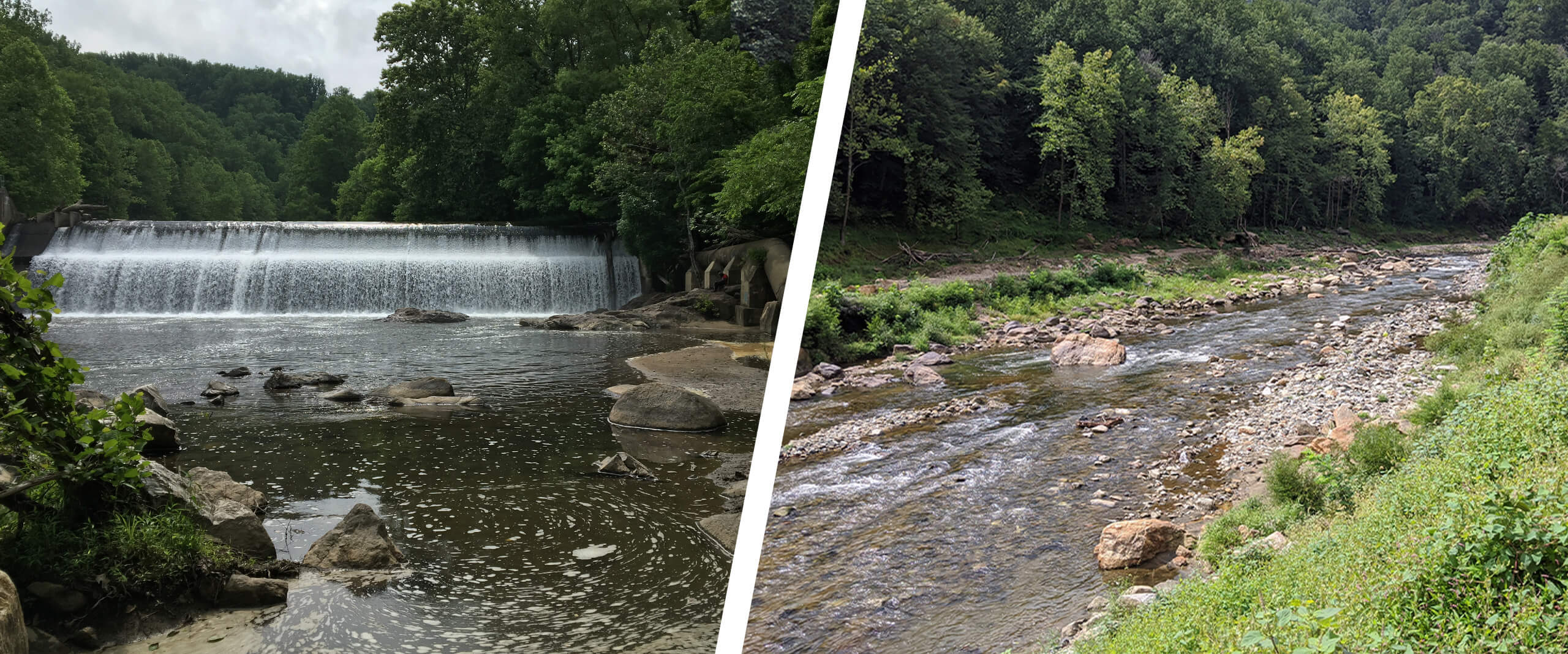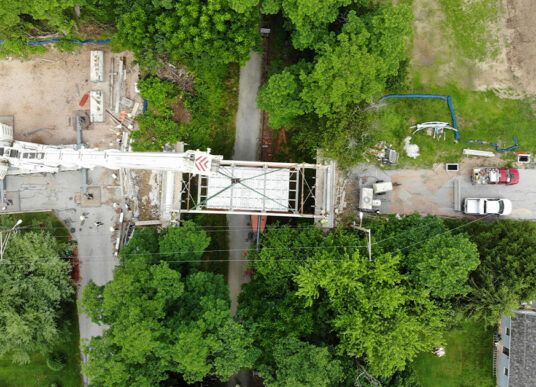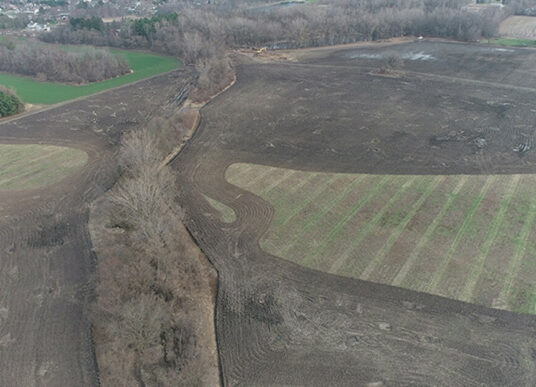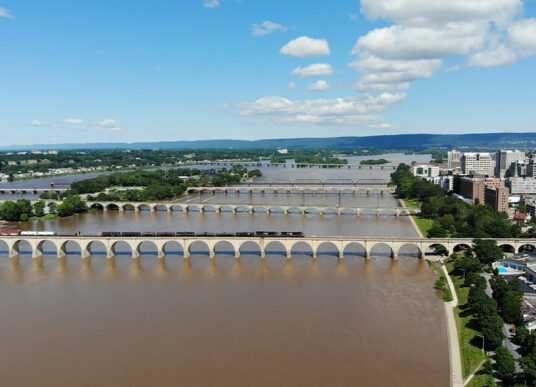The Bloede Dam, formerly located in the oldest and most visited state park in Maryland (Patapsco Valley State Park), has been a source of tragic deaths and a bane to the health of the Patapsco River for the last century.
KCI provided construction management, engineering and inspection services to support American Rivers in removing the structure and returning the channel to a natural state. The Bloede team, including designers Inter-Fluve and contractor Kiewit, overcame a host of unexpected site and technical challenges to successfully address a long-time safety hazard, address public infrastructure concerns, and restore the surrounding area to its natural state.
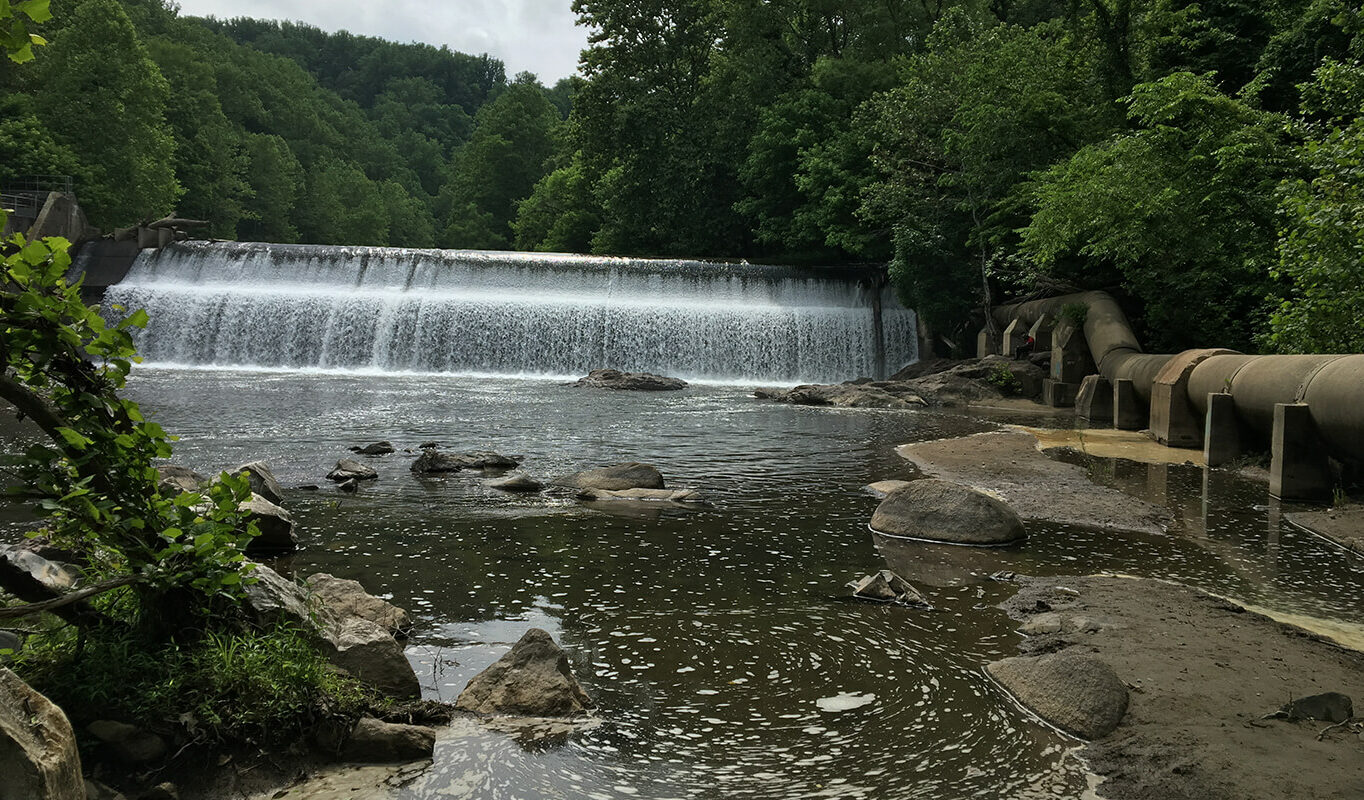 Over the last century, the Bloede Dam deteriorated to the point that millions of dollars were required to comply with dam safety requirements and fish passage best practices.
Over the last century, the Bloede Dam deteriorated to the point that millions of dollars were required to comply with dam safety requirements and fish passage best practices.Constructed in 1907 to provide electric power, the dam’s unique “submerged generating” design was inoperable by 1927 due to sedimentation within the impoundment. Since that time, the 34-foot-high and 220-foot-wide structure has been a public hazard and an obstacle to migrating fish and natural river processes. Decades later, the removal project was initiated by American Rivers in collaboration with the Maryland Department of Natural Resources, and the National Oceanic and Atmospheric Administration.
INFRASTRUCTURE RELOCATIONS
One of the significant outcomes of removing the structure was that the river elevation would be significantly lower, in some areas as much as 25 feet. During further site investigation, the design team determined that extensive sewer infrastructure constructed behind the dam would be exposed and at high risk once the dam was removed and long impounded sediments were flushed downstream.
“This was a two-million-dollar dam removal and a $16 million sewer relocation project,” said American Rivers Director Serena McClain. “The real work was in moving utilities that needed to remain working, connecting them under a flowing river.”
A 42-inch interceptor sewer had been constructed along the river in the 1960s and 1970s, followed by a smaller 12-inch sanitary siphon line on a separate alignment. Both needed to be relocated. The project suddenly grew, and the jurisdictions on both sides of the river, Baltimore and Howard counties, were brought into the design and permitting efforts.
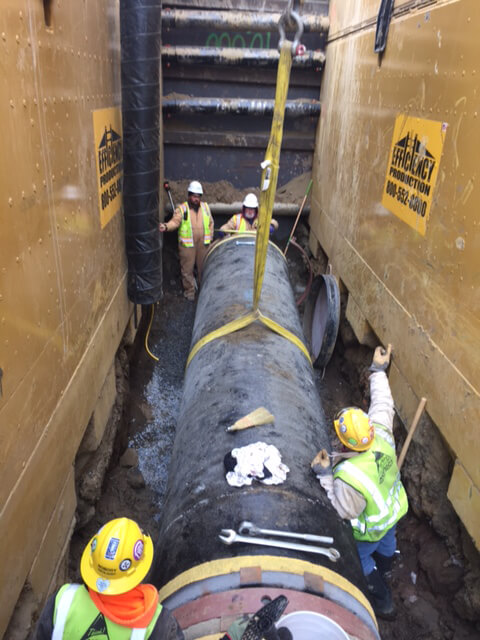
An artificial island had to be created to divert flow around sectional trench shoring, where targeted blasting was required to place the new sanitary lines deep within the bedrock beneath the river channel and subsequent lower water levels.
CONSTRUCTION COMPLEXITY
As the project moved from design to construction, the level of complexity grew significantly due to existing infrastructure, historic structures, and high river flows.
“The existing utility lines became an even more critical issue during construction and again had the potential to derail the project both technically and financially. We worked with Kiewit to address these and other unexpected challenges as they arose.”
– Jim Wilson, PE, Practice Leader
A large utility vault for the interceptor sewer was located within the near-bank area and required extensive scour protection. Approximately thirty 20-foot deep interlinked caissons had to be drilled to construct a secant pile wall protecting the structure. During the operation, Kiewit encountered rock with a hardness of 40,000 psi. For reference, strong concrete has a psi of 8,000. Working 24 hours per day, drilling progress on the three-foot diameter caissons was measured in inches. The retaining structure took months longer than expected to complete.
The sanitary sewer siphon that connected Howard County to the larger transmission main faced a different set of concerns. The proposed alignment passed immediately adjacent to the abutments for a bridge built in 1828 to carry the Baltimore and Ohio Railroad up the Patapsco River Valley. This structure, which currently provides pedestrian access to the park, and the companion stone retaining walls that supported the railroad right-of-way and tracks were deemed historic and needed to be preserved. The construction team worked with the Maryland Historic Trust to develop a reconstruction plan that met both the organization’s needs and the project’s goals. Since the exact removal and reconstruction of a nearly 200-year-old very tall rubble and block wall was a technical and logistical challenge, it was agreed to merge old and new. Block by block the historic features were documented, removed and incorporated as structural facing for a new stabilized earth wall.
Plans called for the siphon to be placed using horizontal directional drilling, but bedrock under the river channel required the team to devise a different approach. The larger sewer line also encountered bedrock. The contractor worked with KCI engineers to place the lines using a cut and fill approach—an extremely challenging method in the flashy river environment. Trench shoring boxes had to be stacked 20 feet tall to accommodate the water, sediment and bedrock depths, with blasting and installation taking place in segments. A temporary island berm was created to divert river flow around the work and was shifted as the work moved from one side of the bank to the other.
A STORM BREWING
On top of the utility-related concerns, working within the flashy river flows presented additional complications. The Patapsco River often experiences drastic increases in water elevation and speed. As a testament to the power of the river, once the water level was lowered following the dam removal, vehicles, oil tanks and hot water heaters were found along the channel as relics of past floods. During construction forecasted storms necessitated removal and protection of the equipment and work areas.
On Memorial Day Weekend in 2018, a tragic second flood hit Ellicott City, a historic mill town immediately upstream of this project. The torrential flood inundated the project site, washing away the temporary construction bridge and leading to the need for re-establishment of previously completed work, site controls and access.
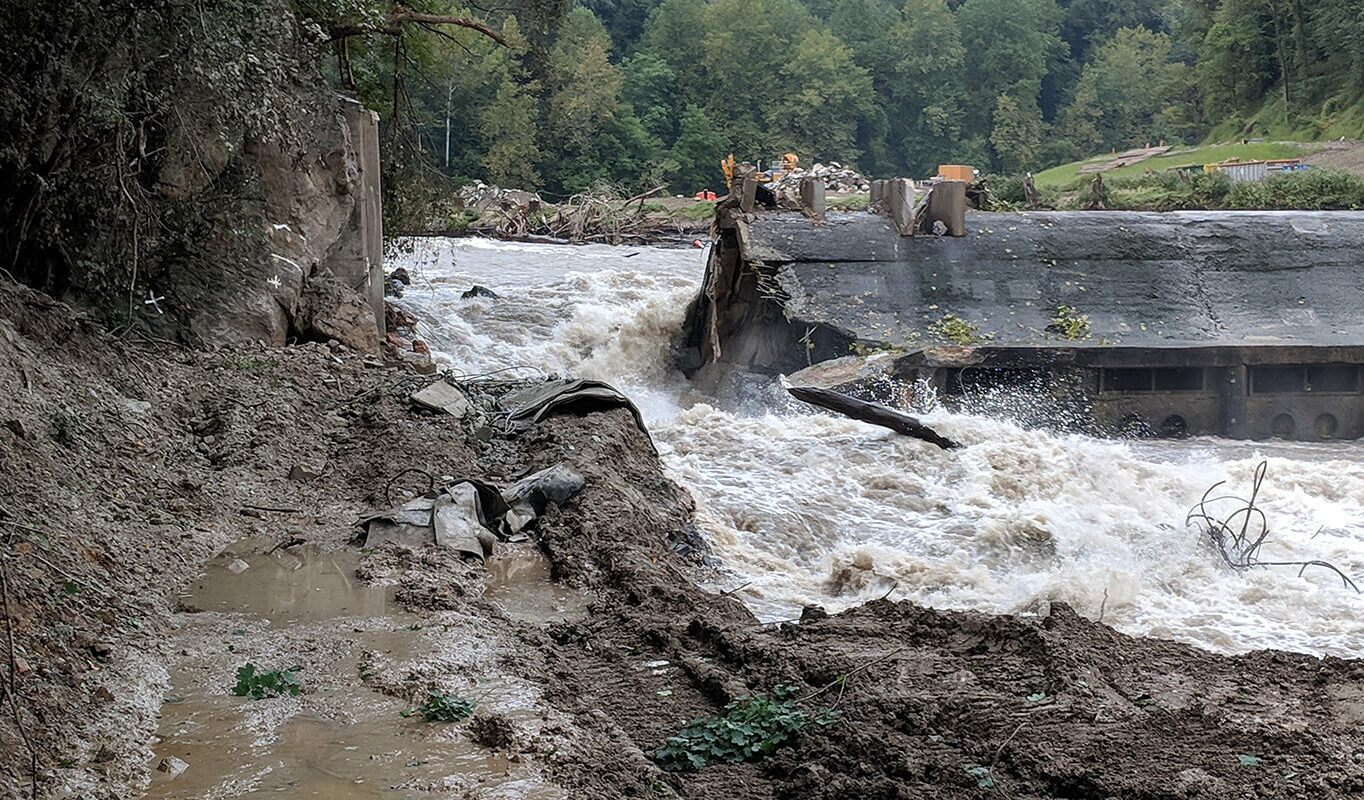
FLOWING FREE
The Bloede Dam removal team overcame many challenges and successfully completed the work on time, exceeding the performance and technical goals, and within the financial constraints of the project.
“The Patapsco River is free, after years of hard work by so many,” said McClain. “It’s wonderful to see the Patapsco rushing back to life, and to watch park visitors rediscover and enjoy the free-flowing river.”
Today, the area is a natural setting that offers a cascading river environment and recreational opportunities for outdoor lovers in the Baltimore metro area. Kids can safely play in the river, canoes and kayaks meander downstream, and fish freely migrate.
The project was recently honored with an Engineering Excellence Grand Award from the American Council of Engineering Companies / Maryland, in addition to an Honor Award at the national level.
